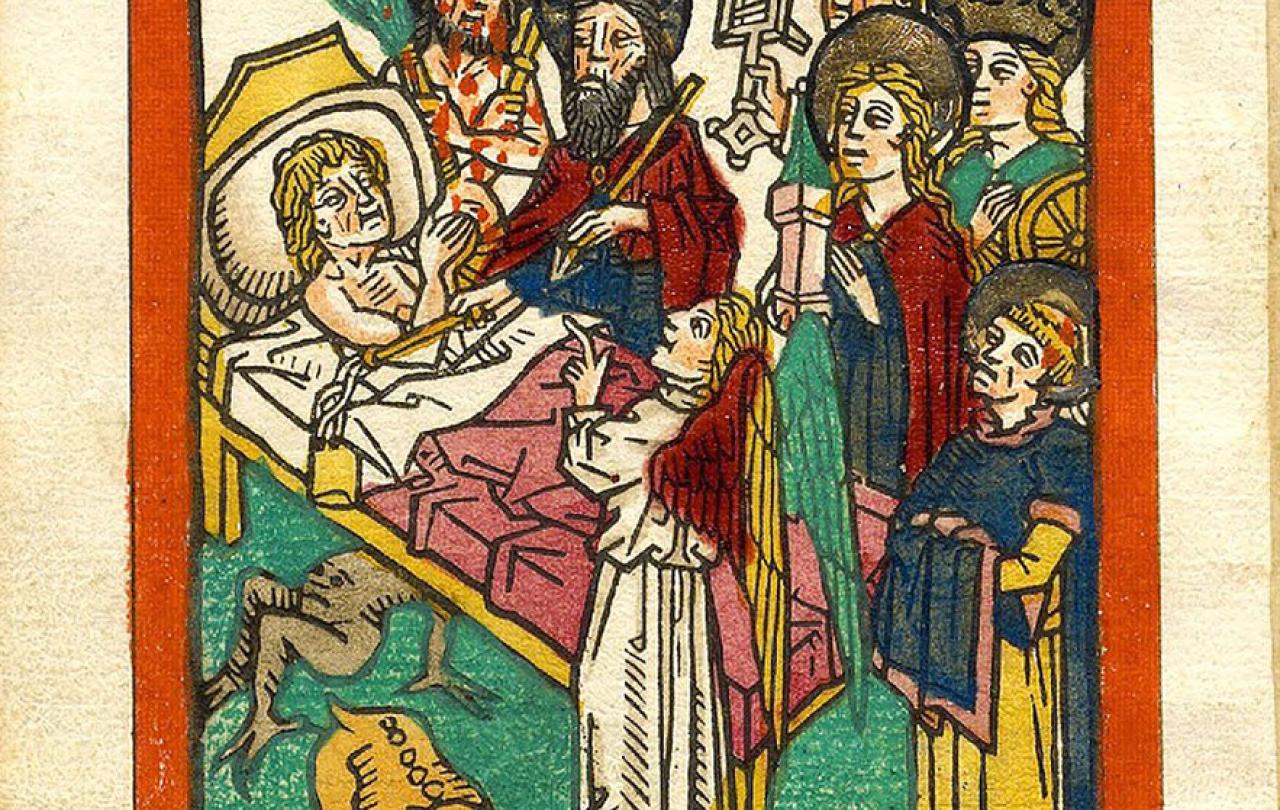Not all who wander are lost.
Often written on a care home wall, on an inspirational poster, these words are usually set against a forest background, or compass, for added effect. They have also been used as the title of a conference paper discussing so-called smart trackers for people with dementia, whilst, Not all who wander need be lost is the title of a concise guide to navigating the heartbreaking challenges when a loved one is diagnosed with Alzheimer’s disease or other dementia.
As a care home nurse for more than ten years, I have seen residents wander - not lost but “walking with purpose”, as it is sometimes known in the caring community. “Nobody gets up and walks without a reason,” says Suzanne Mumford, Care UK's Head of Nursing, Care and Dementia; perhaps they are easing pain, or boredom, or looking for something that they can’t describe. I remember residents exploring, enquiring into self-made mysteries solvable only by themselves, examining everything from door handles to another resident’s buttons, even escaping with surprising speed. Walking with them, often in silence, can bring a sense of relief, comfort and companionship.
What I didn’t know was that this is a quotation from a poem by JRR Tolkien, published in The Fellowship of the Ring seventy years ago. The actual line is - “Not all those who wander are lost”.
All that is gold does not glitter,
Not all those who wander are lost;
The old that is strong does not wither,
Deep roots are not reached by the frost.
From the ashes a fire shall be woken,
A light from the shadows shall spring;
Renewed shall be blade that was broken,
The crownless again shall be king.”
We first hear this poem in Chapter Ten of Book One, as Frodo reads it in the postscript of a letter from Gandalf. As I read it, the imagery of being lost, withered, frost-bitten, in darkness, burned and broken, speaks something, in poetic picture language, of the ravages of dementia, the harrowing losses, the valley of tears. It brings to mind residents unaware of familiar objects or surroundings, looking straight through loved ones without a flicker of recognition, losing also language, continence, mobility and the ability to swallow.
The TV presenter Fiona Philips recalled an agonising decline in her mother as she succumbed to Alzheimer’s, describing how, in the final stages, her mother “spent whole chunks of time just sitting and staring ahead, only able to give out a series of sounds”. Fiona herself now lives with dementia. “'It’s devastated my family and it’s the biggest health and social care challenge we face as a country,” she says.
I once interviewed retired doctor Jennifer Bute, who lives with dementia. She talked of time travel (perceiving herself as living in a time from her past); disorientation to place and person; frightening hallucinations when old memories are seemingly ‘unlocked’; and ‘emotional unzipping’ when agitation and anxiety increase, often in the late afternoon or evening in something poorly understood as a symptom, known as ‘sundowning’.
Yet there is something more to this poem – each of the pains has a promise – not all who wander are lost; the old that is strong does not wither; and, most poignantly, deep roots are not touched by the frost. In dementia, it is true that deep roots are untouched, that an enduring aspect of a person’s identity never truly withers, though it may be mostly unseen. Something remains. Oliver Sacks the famous neurologist emphasised that, even in the late stages of Alzheimer’s, the person is still ‘alive inside’ (the inspiring documentary with this title is recommended). In stunning real-life stories, he has shown how music appears to ‘call back the self’, awakening moods, memories and thoughts that had seemingly been lost. He refers to music’s extraordinary ‘neural robustness’ and describes one man, unable to tie his tie or find his way to the stage, yet able to perform a perfect piano solo. In one life-affirming, must-watch, tear-jerking video, gospel music was shown to enliven, calm, focus and engage a man simply known as Henry.
Watch Henry
Singing can “provide islands of arousal and awareness like nothing else can”, according to Alicia Clair, Professor of Music Therapy. I’ve seen singing bring the person into the present for a passing moment, illuminating a face that seemed far away. One otherwise-silent lady completed the chorus of ‘Daisy, Daisy’ before descending into dementia again. Others have laughed, clapped, danced, embraced and even shed a silent tear during music therapy sessions, when music elicits memory. Doll therapy meanwhile has sometimes restored and revealed a sense of nurture, purpose, care and pride, with residents feeding their new friend before accepting their own food, folding its clothes and taking care of it cradled in their arms. Though it divides opinion, a doll can preserve dignity if it de-escalates agitation or engagement in physical or verbal abuse; a sense of dignity also comes from the person being able momentarily to give care rather than receive it.
“From the ashes a fire shall be woken, A light from the shadows shall spring; Renewed shall be blade that was broken,” continues Tolkien's poem, and, though not the original intention, these powerful images of renewal and restoration paint a picture of something known as “paradoxical lucidity”, or unexpected cognitive lucidity and communication in some patients with severe dementia, especially around the time of death (though sometimes long before).
Anecdotes are recorded of “unexpected, spontaneous, meaningful, and relevant communication or connectedness in a patient who is assumed to have permanently lost the capacity for coherent verbal or behavioral interaction due to a progressive and pathophysiologic dementing process”. Some scientists are seeing them as a paradigm shift in the understanding and perhaps even treatment of dementia. I will never forget when a woman in the late stages of dementia, with little spoken language, was brought back to the nursing home weeks after hospital admission; she had been perilously ill. With bright eyes, she took my arm and, as if the mist had cleared for a moment, spoke warmest words of thanks to me for helping her on the day she collapsed. In another fleeting and irreproducible moment, a lady wished me happy birthday, before continuing her silent walk around the home. Witnessing such an event is ethically and emotionally transformative.
The concept of remaining ‘alive inside’ even when abilities, language and memory are eroded by dementia is taken to the next level in Christianity, which teaches that life continues even after death itself. The Bible speaks of new life beyond the grave; the fire shall be woken, a light shall spring. And there will be a crown (and the gold will glitter). The Crown of Life is referred to, being bestowed upon "those who persevere under trials." Dementia is one of life’s severest trials; a cross to bear. In the 1912 hymn “The Old Rugged Cross”, another cross is spoken of, being the cross of Christ at his crucifixion. Clinging to that cross, living out a Christian life, the hymnwriter wrote of “exchanging the cross for a crown” at life’s end. After ashes, hope awaits the Christian.
Playlist for Life is a charity encouraging people to create playlists for people living with dementia.








